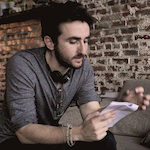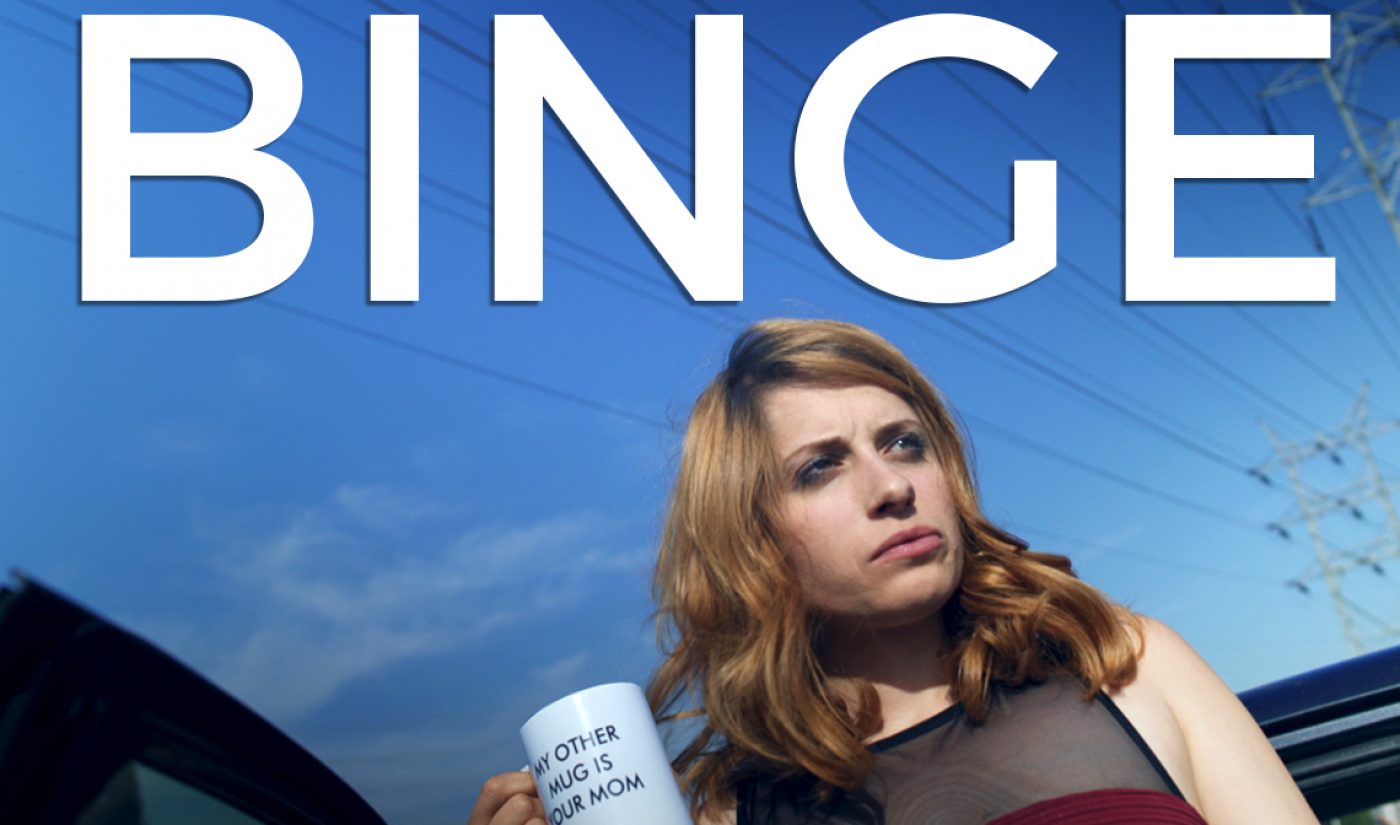A few months ago, my partners and I had a wild hypothesis. It was this: the success of a digital project is primarily dependent on the quality of the story.
Revolutionary, right? A real game-changer. Who wants to hire us as consultants?
Here’s the thing. Since my company (shameless plug, we are Happy Little Guillotine Studios – check us out!) started creating content in the digital space in 2006, the industry has been desperately chasing the, “How do we get views?!” high like a cokehead chases… well, coke, probably. Maybe deer, if they’re a hunting cokehead.

Subscribe to get the latest creator news
It’s a desperate, “We’ll sacrifice anything for views!” approach that can give digital networks tunnel vision when they greenlight programs. Instead of picking the best story, they pick the story with the best influencer package. Don’t get me wrong, this is a strategy that my company has also employed and continues to employ with great success (in fact, our Maker Studios series, Dan is Dead, starring Drake Bell – who’s awesome, btw – should hopefully be out sometime soon). When there are wildly talented influencers who can not only lead a show but bring an audience, it’s a no brainer to attach them to your project.
Still, much of what I’ve seen recently in the digital space has fallen short of providing the kind of quality provided by television and film. And that’s who we’re competing with now, by the way. When we started, digital was referring to cute videos you shot of your babies and your puppies and Netflix was still busy shipping DVDs and killing Blockbuster – that’s not the case anymore. Digital has reached legitimacy as a true artistic medium. And with legitimacy comes a demand for much higher quality. I’m not talking about budgets here, either. I’m not talking about aerial shots or giant explosions, I’m talking about the quality of the stories we’re telling. Because, right now, the focus is views first, good story second – and that, as a coke-addicted deer-hunter would say, “…is the best way to shoot yourself in the foot. Also, do you know where I can get some coke?”
So, with all that said…my company and I had a wild hypothesis. We believed that content alone could create a popular show, even if it had no marketing budget or influencers attached.
Luckily, we had just the project to test this with.
It’s a show called Binge. A dark comedy about bulimia and addiction that I co-wrote and co-created with the great Angela Gulner – a fantastic actress and writer with a social media following in the 100s (aka not an “influencer”) who suffered with bulimia for over 10 years until she drunk-dialed a partial hospitalization eating disorder clinic and ended up spending eight hours a day, six days a week re-learning how to eat.
When Angela brought the idea to us, we knew it could be something special. A true story, dark, brutally honest and hilarious. This was a delicious little piece of art. If anything would succeed with story alone, Binge might be it, we thought.
Lucky for us, we were very, very right.
So here’s how we did it…
Writing The Script
After Angela and I wrote the Pilot, Angela showed it to therapists and ED (eating disorder) sufferers. I showed it to industry people and also regular, Human people. The consensus was that it was really dark, kind of uncomfortable, very entertaining, and we should really go make the thing. We agreed.
We did readings, polished it a million times, rewrote it so it was shoot-able on a very limited budget, and went about producing it. The development and writing of the script is by far what took us the longest… as it should be.
Filming The Pilot
Shooting the Pilot – instead of going the traditional route of pitching it around town – was one of the most freeing decisions we could have possibly made.
Once we decided this was going to be our art piece, the salability of it stopped mattering – what mattered was that we were going to tell Angela’s story as honestly as we could. We would cast actors we trusted with the material, we would not worry about stunt casting, influencer casting, celebrity casting – we were just going to worry about bringing this concept to life in the most honest way we could.
It took five shooting days, spread over the course of several weeks. A small, amazingly passionate crew and team of actors who believed in the little project as much as we did lent us their time and exorbitant amount of talent. As many of us who have ever created independent content know, there’s something both terrible and magical about creating something with very little money. There are very long nights. The kind of nights where you wonder if you’ll ever be done. The kind of nights where your DP decides he must get a particular shot, so he builds a giant, C-stand-jib-arm-contraption that he sticks through his car’s sunroof and drives down the streets of LA, hoping he doesn’t hit a power line. The kind of nights that are delirious, filled with improv, laughter, and a lot of cake.
There’s an energy on set, a buzz that comes from creating art for art’s sake and when we made Binge, it was palpable.
The Release
My very, very modest goal was to get 10,000 views on YouTube – I figured that with no influencers, a channel with 3,000 subscribers and a 25-minute Pilot, we could only do so well without marketing dollars. With 10,000 views, I thought it might show buyers that the audience was there, and that we would just need some extra support to bring it to a larger one. I figured it would be the minimal requirement to proving our hypothesis true.
Our release had a strategy to it.
First of all, we picked the week after Thanksgiving to put out the Pilot. It’s a notoriously terrible time for people with eating disorders and we hoped that the Pilot would provide some comfort to those suffering; knowing that you’re not alone is a powerful thing.
We then reached out to multiple female-leaning publications (ThoughtCatalog, EliteDaily, The Establishment, Bust, Funny Women, etc.) and asked for them to write and release articles on the same day we’d be releasing the episode.
That way, when we released, we immediately had press which drove views quickly and got us attention from other publications, building on itself like some kind of thing that builds on itself. A spiderweb? I don’t know. Let’s say a spiderweb.
With our baby released into the world, we waited to see what would happen…
The Results
If I was a click-bait article that your strange, distant relative might post on Facebook, I might say that what happened next will shock you…
The reaction to the release was powerful, to say the least. In a week, our 25-minute Pilot was written up in nearly a dozen great publications and we hit 10,000 views. I was thrilled. Then… in another week, we were at 20,ooo. As the holidays neared, 30,000. Suddenly, it was jumping by leaps and bounds – 50,000, 80,000… 200,000… getting to where it is now – 320,000 and counting.
Views aside, it was the audience interaction that blew us away. We’d be getting pings every few seconds with a new comment on the video (over 4,000 comments and counting now). Our email was buzzing with people reaching out, thanking us for creating the Pilot, sharing with us their own powerful experiences. Our subscribers jumped from 3,000 to 15,000, our views kept going up, and we amassed, in a matter of weeks, an audience far more powerful than many of our high budget series have gotten.
We are getting calls and meetings about a potential season with a variety of outlets. We couldn’t have hoped for a better outcome (well, no, we would’ve loved to hit 10 million views, but considering this is a 25 minute Pilot launched into the ether with no influencers or marketing budget, we consider it a great success anyway!).
For me, Binge was proof of a lesson that artists and distributors alike seem to have to constantly relearn: there’s no science to art. Yes, you can certainly approach a project with a strategy to give it the best chance of success, but at the end of the day, the story is first. It’s always first. It has to be first. We need to tattoo those words, Memento-style, all over our bodies less we forget them minutes later: story comes first.
So, the next time you’re putting together your production slate, picking up shows from creators or trying to figure out what independent project you should shoot next – have a strategy, yes. Attach some influencers (that can act, please), absolutely. But above all else, remember that the biggest and most passionate audiences will innately go to what’s honest, to what’s true, to what’s good – no matter who you have attached.
Thanks for reading. Let’s go tell some stories together.
 Yuri Baranovsky is a director, writer and one of the founders/partners of Happy Little Guillotine Studios, a production house and creative agency that has been creating innovative branded and original content for the web for over 10 years.
Yuri Baranovsky is a director, writer and one of the founders/partners of Happy Little Guillotine Studios, a production house and creative agency that has been creating innovative branded and original content for the web for over 10 years.








